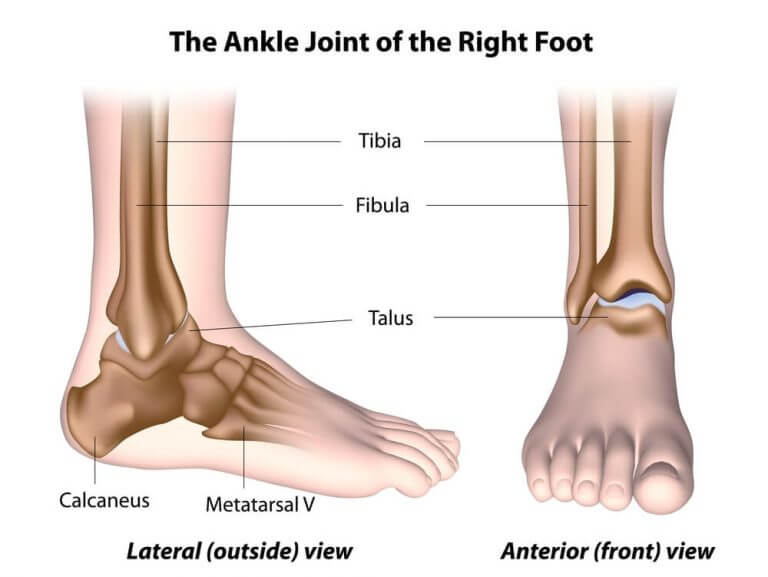
Sprained ankles are a common condition and re-injury happens often without proper treatment. Sprained ankles vary in severity and involve the ligaments in the ankle. It’s shown that proper rehabilitation is important if you have a sprained ankle, as this injury has a very high recurrence rate of up to 70%.
Ankle Anatomy
The ankle consists of three bones attached to tendons, muscles and ligaments which connect the foot to the leg. The two bones of the lower leg, the tibia and fibula connect to the talus (ankle bone) at the tibiotalar joint (ankle joint), allowing your foot to move up and down.

Your ankle joint is made up of three bones, these are:
- The tibia (shin bone)
- The fibula (thin bone running adjacent to the tibia)
- The talus (foot bone sitting above the heel bone)
The two bony bumps on each side of the ankle also have their own names:
- The lateral malleolus – on the outside of your ankle and is part of the fibula base
- The medial malleolus – on the inside of your ankle and part of the tibia base
Why Are My Ankle Ligaments So Important?
Ligaments are strong fibrous tissue that connect bones to other bones. They help to hold tendons in place and stabilise your joints. Ankle sprains are one of the most common injuries to the ankle, often occurring to the talofibular ligament and the calcaneofibular ligament.
The outside of your ankle has three ligaments:
- Anterior talofibular ligament
- Calcaneofibular ligament
- Posterior talofibular ligament
- The inside of your ankle has another ligament which is much stronger called the deltoid ligament.
What Is A Sprained Ankle?
A sprained ankle occurs when the ankle ligaments have been overstretched. It may only be a mild “twisted ankle” through to a severe sprain or ligament rupture. Ankle sprains commonly occur by rolling your ankle on unstable ground. This often happens when running or jumping on an irregular surface.
A sprained ankle can cause the following symptoms:
- Pain
- Swelling
- Cracking noise
- Bruising
- Trouble walking or standing on the affected foot
Physiotherapy For A Sprained Ankle
Your physio will first diagnose your condition and rule out any other causes such as a fracture. After ruling out other causes, physio for a sprained ankle often follows a treatment plan which includes the following:
Reduce pain and swelling – Your physio may use techniques such as joint mobilisation, taping, exercises and soft tissue massage.
Restore full range of motion – This may involve hands on physio techniques and home exercises.
Return to activity – This involves specific exercises to restore muscle strength and proprioception.
What Should I Be Able To Do Before I Return To My Normal Activities?
You should be able to perform certain exercises comfortably before returning to sport. Your physiotherapist will be able to determine if it is safe for you to return to normal activities. Some of the exercises you will need to perform include:
- Knee to wall
- Hop length test
- Leg heel raises
- Hop up and down on a step (single leg)
Ankle sprains are a common injury, especially on the sporting field. It’s important to seek treatment to rehabilitate and avoid re-injury due to ankle instability. For more information about physio for a sprained ankle, contact Integrity Physio.




